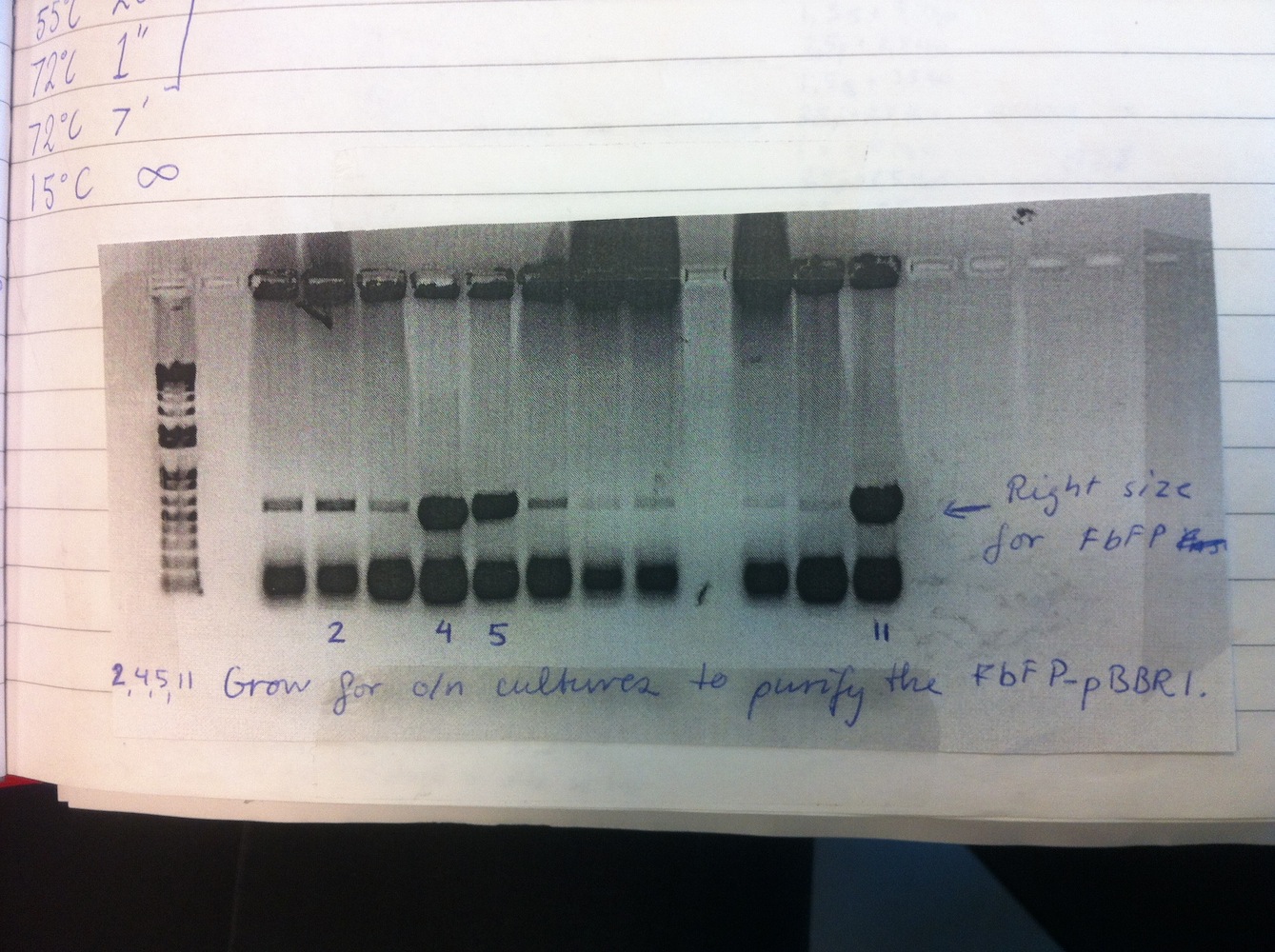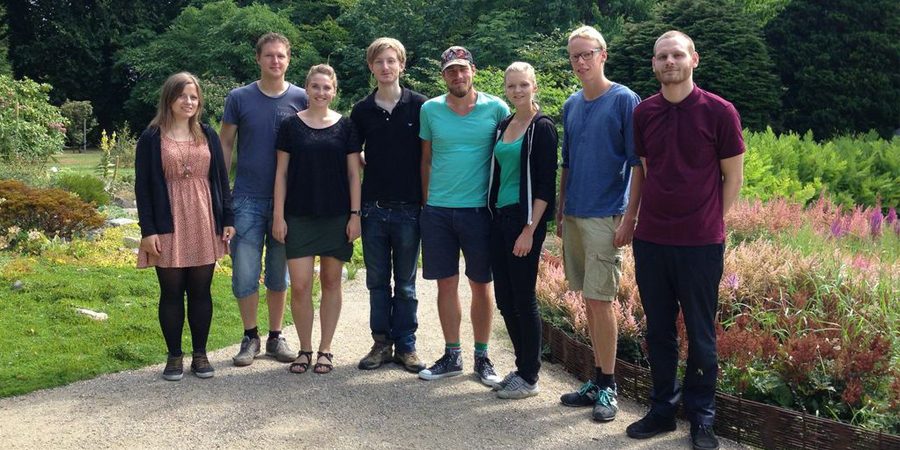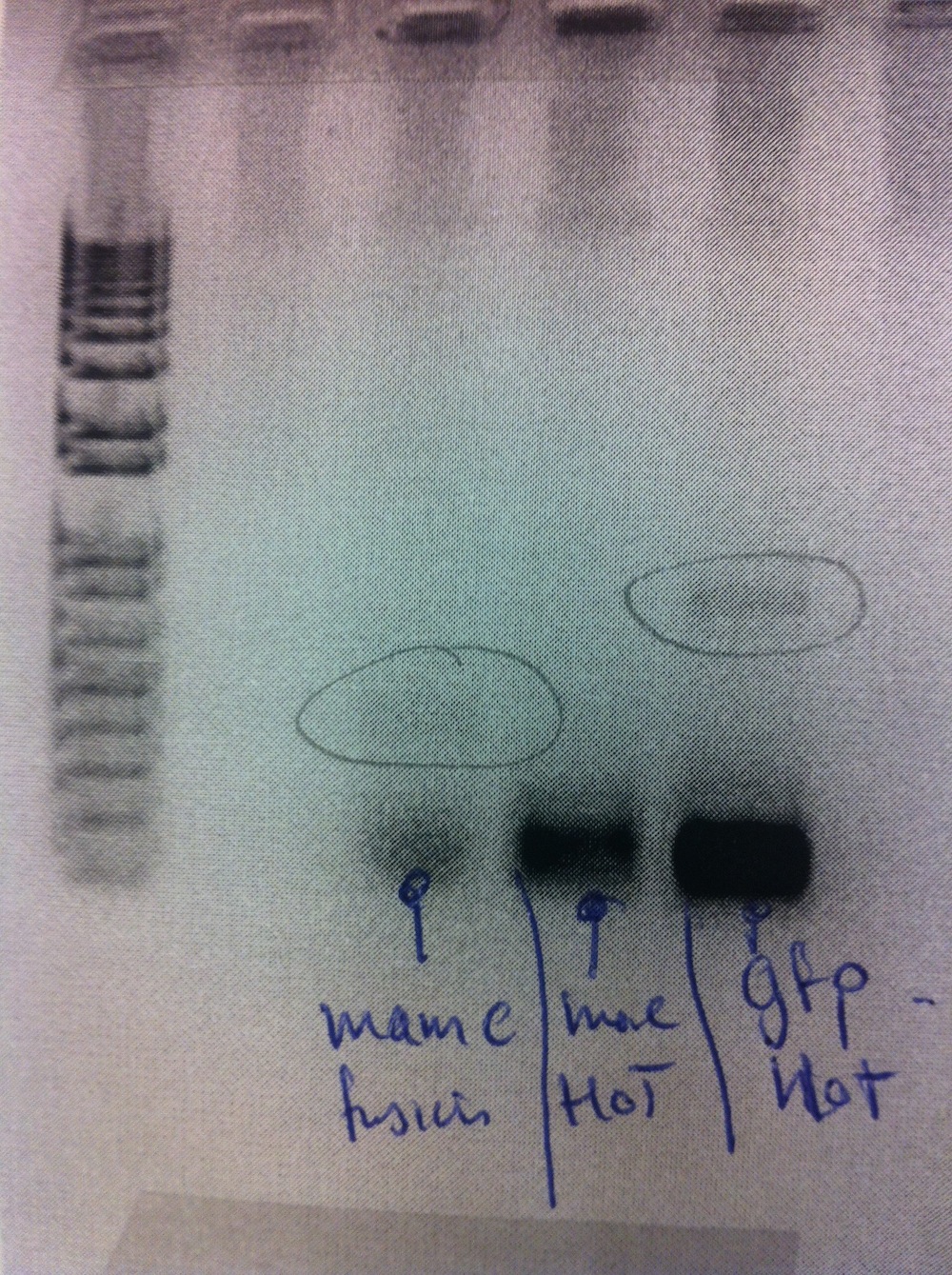Team:UNIK Copenhagen/Signe Notebook
From 2013.igem.org
Notebook
Get our Nootebook in a printable version here .
Week 1 - July 8th-14th
Culturing of magnetotactic bacteria (MTBs)
Making base media for growing magnetotactic bacteria. This media was also used to make agar plates.
MS-1 inoculated in liquid base medium. Falcon tubes were flushed with the nitrogen before use and incubated at 28 degrees.
Plates were kept in a closed container with an Oxoid AnaeroGen pad.
Assembly of constructs
Glycerol stock of E. coli with pBBR1MCS-2 was thawed to grow on these plates.
Primers for MamC (MS-1 strain) was ordered.
Week 3
Culturing of MTBs
making charcoal media and plates. MS-1 and MSR-1 was inoculated. Liquid cultures were setup in Hungate tubes 200ul, 400ul and 600ul of each strain (MS-1 and MSR-1). Charcoal plates were inoculated as well with both strains.
Assembly of constructs
Colony PCR of eFbFP-pEX-A and eGFP-pDRIVE. Only eFbFP was succesful.

Overnight cultures were made of colony 1-4 (eFbFP-pEX-A). Miniprep of eFbFP-pEX-A
cultures. Samples sent for sequencing.
Overnight cultures were made of colony 1-4 (eFbFP-pEX-A).
Miniprep of eFbFP-pEX-A cultures and nanodrop. Samples sent for sequencing.
Colony PCR of eGFP-pDRIVE was repeated. Still negative.
Cloning and transformation was also repeated. CloneJET PCR cloning kit was used to create eGFP-pJET (pJET was chosen instead of pDRIVE). Not successful.
Gradient PCR of eGFP premade vector (56-65 degrees). Gel electrophoresis was carried out and the bands were purified from the gel.
Cloning of eGFP into pDRIVE. Not successful.
Cloning of eFbFP into expression vector pBBR1MCS-2.
Colony PCR of eGFP-pDRIVE and eFbFP-pBBR1MCS-2. Gel electrophoresis only reveal one colony to be successful (eFbFP-pBBR1MCS-2 no. 17).
Week 4
Assembly of constructs
Colony PCR of eGFP-pDRIVE was repeated with increased elongation time (1 min.)


Overnight liquid cultures were setup for colonies 2, 4, 5 and 11.
Miniprep was performed on these cultures alongside eGFP-pDRIVE colonies 1-4. This gave good yield and the plasmids were sent for sequencing. This showed eGFP-pDRIVE no. 4 and eFbFP-pBBR1MCS-2 no. 17 were perfect!
Cloning and transformation of eGFP-pBBR1MCS-2 using plasmid no. 4 (mentioned just above). The transformation only gave rise to 2 colonies, thus suggesting the cloning to be unsuccessful. The cloning was repeated and transformation was carried out again. Colony PCR was performed alongside MamC-pJET (see gel below).
Liquid cultures were setup from eFbFP-pBBR1MCS-2 no. 2, 4, 5, 11, 17 for 2 hours in order to measure fluorescence. First, OD(600nm) was measured to ensure equal density of cells. The measurements did not show fluorescence (ex. 450 nm, em. 495 nm) from the cultures.
Cloning and transformation of MamC-pDRIVE. Colony PCR showed the cloning to be of cryptic success. Colony PCR was redone without success.
Cloning was redone using the CloneJET PCR cloning kit. MamC-pJET was transformed and plated. Colony PCR was carried out alongside eGFP-pBBR1MCS-2.

The gel electrophoresis indicated MamC-pJET to be successfully cloned. Some of the eGFP-pBBR1MCS-2 colonies looked successful as well.
Week 5
This week the team . . .
more text on this page!
Week 6
This week the team...
more text on this page!
Week 7
This week the team...
more text on this page!
Week 8
This week the team...
more text on this page!
Week 9
This week the team...
more text on this page!
Week 10
This week the team...
more text on this page!
Week 11
This week the team...
more text on this page!
Week 12
This week the team...
more text on this page!
 "
"





